Do you like going hiking? Our China hiking tours from Shanghai can be a good choice for you. During the tour, Yunnan hiking will take you to a fairyland on Jade Dragon Snow Mountain. Yet the most trilling section is in Tiger Leaping Gorge. It’s a world-class hiking route. Along the rugged trails on the vertiginous cliffs, you will experience the most challenging 28 Bends. If you successfully walk along them, you will prove to be a person stronger than many others! After that, the remaining route will be easier and pleasing as jaw-dropping scenes behind are beckoning to you. Just like the life journey, when the greatest difficulty passes, you will embrace a delightful section. Then Beijing hiking tours will also be exciting as many historical sites such as Temple of Heaven and the Great Wall are worth exploration.

Upon arrival, you will be picked up by the tour guide to the hotel for a rest.
Welcome to Shanghai! Your China hiking tour begins with wonderful trips to well-renowned scenic sites in Shanghai. It's a magic city with vigor and vitality. As a municipality of China, Shanghai enjoys a rich culture and various historical sites, covering an area of 6,340 square kilometers. With distinct four seasons, it enjoys a humid and warm climate. Known as Oriental Paris, the metropolitan city is a crucial financial, scientific, shipping, industrial, transportation, conference, and exhibition center in China.
Suggestion:
If you are eager to explore the magic city tonight, Huangpu River Cruise is a good choice. As a tributary of the Yangtze River (the longest river in China), Huangpu River is a symbol of Shanghai. On the Huangpu River Cruise, you will see spectacular views of nightlife in Shanghai. Famous landmarks like the Oriental Pearl Radio & TV Tower at night are more enchanting with gorgeous light shows. You will fully get relaxed by soft breezes and the delightful sound of waves.
After breakfast, the guide will take you to Yu Garden (closed on Monday). As a classical garden, it was built in the Ming Dynasty (1368-1644). In this picturesque garden, you will see quaint rockeries, beautiful pavilions, long corridors, ancient bridges, and many other features of Chinese gardens. Besides, there are a variety of ancient trees and big bonsais. Walking along the zigzag trails, you will find 21-meter high ginkgo planted by the first owner of the garden 400 years ago. In addition, Yu Garden also houses many historical relics, such as the gold bowl from the Tang Dynasty (618-907).
Then you will be taken to Shanghai Old Street. With a length of 825 meters, the street bears witness to the great social and economic development of Shanghai. Historically, it was home to the earliest tea house, gold shop, commercial firm, pub, etc. Ancient dwellings and time-honored stores will bring you back to the old Shanghai of a century ago.
The third scenic area is Xintiandi Area. Covering 30,000 square meters, a spot is a place for leisure and recreation, brimming with the European ambiance. With its unique shikumen architecture, it is home to various bars, restaurants, and nightclubs.
After lunch, let us go to the Former French Concession. With top-end dwellings, this spot was once almost the largest and most flourishing concession in old Shanghai. It played an important role in the development of modern Shanghai. Enjoying a high degree of autonomy, the Former French Concession was a haven when the Japanese invaded Shanghai. It's a place with an extraordinary history.
With a great impression of the former concession in the past, you are about to leave for Shanghai Tower, a modern wonder. It’s a vertiginous skyscraper with a height of 632 meters. As a vertical commercial district, it has nine areas of retails, workspace, hotels, and sightseeing platforms. There is an observation deck called “Top of the World” where you can have a panoramic view of Shanghai. Top of the World is a place for entertainment, drinking and dining, and sightseeing. You can fully enjoy yourself in this multiple-function building.
After a day-long trip, you will be sent back to the hotel for a rest.
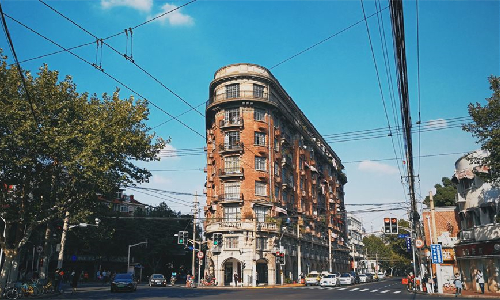
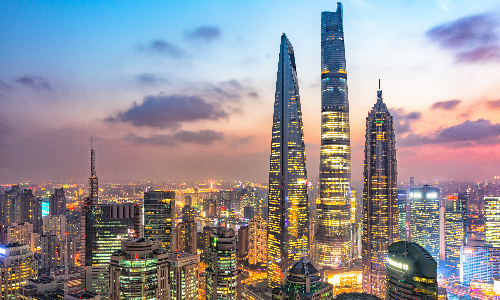
 Kunming
Kunming After breakfast, you will be taken to the airport to board the estimated flight MU5219 11:05/14:25 to Kunming. Upon arriving, the local tour guide will send you to the hotel where you can have a good rest.
 Lijiang
Lijiang You will be sent to take the estimated flight D8772 08:47/11:45 to Lijiang. Upon your arrival, the local tour guide will pick you up at the airport and take you to visit the beautiful Lijiang Ancient Town. Built in the late 13th century, it covers 7,279 square kilometers. The town lies beside mountains and along waters, featuring unique residential complexes. As the heart of the town, Sifang Street boasts convenient transportation with long winding lanes. It was the most hub of the nongovernmental international trading road in ancient Southwest China. During the Ming and Qing dynasties, merchants from all over the world gathered here and cultural exchanges were active. The distinctive street views just seem to be a fairyland.
After that, you will be sent back to the hotel.

Today, the first spot is Jade Dragon Snow Mountain, 37.6 kilometers away from Lijiang downtown. Within 45 minutes on a ride northward, you will reach the snow-capped mountain. It has 13 peaks standing in a vertical array from south to north with the chief peak 5,596 meters above sea level. Covered with snow all year round, its peaks look like a jade giant flying dragon. That’s why it is called Jade Dragon Snow Mountain. Meanwhile, rocks on the mountain are mainly basalt and limestone that form a clear distinction between black (basalt is black) and white (limestone is white), so it's also called "Black and White Snow Mountain". It is the divine mountain of the Naxi ethnic group. Legend has it that Jade Dragon Snow Mountain is the reincarnation of their God.
So let us start the Hiking tour on Jade Snow Mountain. First, you will take a cable car to Spruce Meadow. It's a fairytale meadow halfway up the chief peak, encompassed by spruce trees. It’s said that a young man and woman in the tale of the Naxi ethnic group came here to die for love when their love was crushed by traditional ethics – arranged marriages. They believed that they could enter an ideal kingdom at the cost of their lives in Spruce Meadow. The cable car will take you downward to Blue Moon Valley. Seen from a distance, the valley looks like a blue moon embedded at the foot of the mountain. You will see four lakes along the way with gorgeous views.
After lunch, we will go to Baisha Village 27 kilometers away to enjoy the Baisha Murals, and you can reach the southern foot of Jade Dragon Snow Mountain in 40 minutes by car. As the earliest political, economic, and cultural center of the Naxi ethnic group, Baisha Village is an ancient and beautiful place famous for Baisha Mural Paintings. The creation of these paintings spanned over three hundred years from the early Ming Dynasty to the early Qing Dynasty, and they are a product of the social opening up of the Naxi ethnic group in ancient times. The existing 55 mural paintings are distributed among four temples, three of which are located in Baisha Village, depicting a wide variety of motifs such as religious figures, animals, and natural landscapes, from which you can have a glimpse of the social life at that time.
The next stop is Black Dragon Pool Park, 9.8 kilometers away from Baisha Village. It takes about 18 minutes to get there. The park boasts an ancestral hall, plum trees, cedars, and tombs, dating back to different dynasties. There is a pool of lucid water welling up from the ground. A legend has it that ten dragons did evil in the region. An immortal called Lü Dongbin subjugated nine of them and had them imprisoned under an ancient tower. Only a small black dragon was left here by him with a mission to serve the people. Thus, the pool was named Black Dragon Pool.
As the walking tour in the park ends, you will walk to the Dongba Culture Museum beside it. Covering an area of 4,666 square meters, the museum is an ethnic and folk-custom museum with a combination of history, nature, and arts. Featuring the Dongba culture of the Naxi ethnic group, the quadrangle structures house more than 12,000 pieces of historical relics. Here you can watch the performance of the Dongba worship ceremony.
Getting back from the museum, you can have a good rest in the hotel.
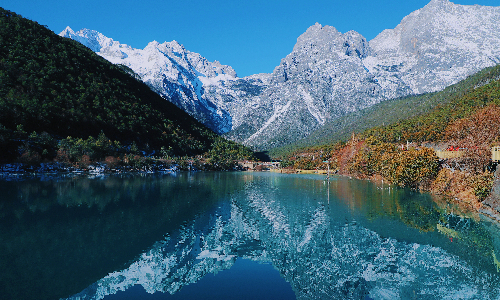
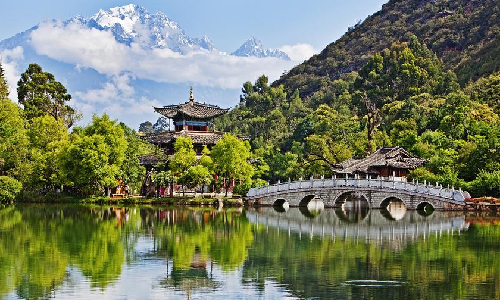
 Tiger Leaping Gorge
Tiger Leaping Gorge After breakfast, the guide will take you to Tiger Leaping Gorge, 88 kilometers away to the north of Lijiang. Within 1.5 hours, the gorge will be in your sight. With the Jinsha River running across it, Tiger Leaping Gorge is the largest gorge along the Yangtze River – the longest river in China. The world-renowned deep gorge is comprised of upper, middle, and lower sections, with numerous reefs, 21 rapids, 710-meter step-down floors, and 10 waterfalls. Its narrowest point is only about thirty meters wide, and it is said that a fierce tiger once leaped through this narrowest point. So, it's called Tiger Leaping Gorge.
The Hiking Tour to Tiger Leaping Gorge starts with Qiaotou Village. This is a world-class hiking route attracting many tourists from all over the world. First, it takes one hour to get to Naxi Family Guest House on foot. Here you can see Jade Dragon Snow Mountain from an ideal perspective, which presents the best appearance of the snow-capped mountain in the mist. After a short break, you’ll continue to walk to 28 Bends, which is the most precipitous section of the route. Along the rugged trails on the vertiginous cliffs, you will be overwhelmed by the thrilling heights. When you finish the most challenging 28 Bends, jaw-dropping scenes behind are beckoning to you and you will enjoy a two-hour delightful walk to Tea Horse Guesthouse in Yongsheng village. Tonight, you will have a good rest in the guesthouse.
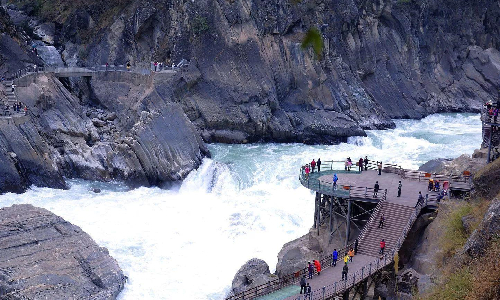
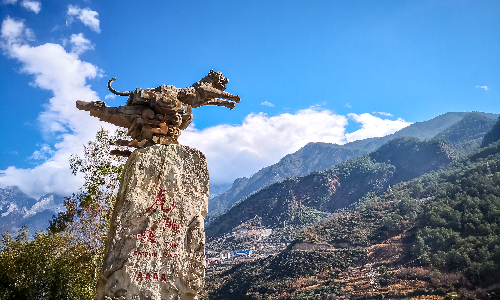
 Shangri-La
Shangri-La Today, let us continue the hiking tour. Within two hours on foot, you will get to TINA Guesthouse for a short break. The next destination is the Middle Section of Tiger Leaping Gorge. Along the way, you will find an almost vertical ladder that seems to lead to Heaven. Then you will reach the Thin Strip of Sky, where the sky seems to be cut into a strip by high peaks. You will feel you’re on the edge of the sky. Meanwhile, you will hear the sound of the running Jinsha River in the deep valley. The river in the Middle Section goes down from a height of near one hundred meters, with turbulent currents flow down reefs like stars falling from the sky. When the exploration is finished, you will return to TINA Guesthouse on foot and take a car to Shangri-La, 101 kilometers northwest away from Tiger Leaping Gorge, or a drive of 1 hour and 40 minutes.
This morning, you will leave for Songzanlin Monastery, the largest Tibetan Buddhist temple in Yunnan Province. Hailed as the “Small Potala Palace” (Potala Palace was the economic and religious center of Tibet before), it stands beside mountains like an ancient castle. Built in 1679, it is deemed as a Tibetan art museum with a collection of Tibetan plastic arts. Legend has it that its location was chosen by Dalai Lama through divination. He got the oracle that the monastery should be set up in a place where there is a spring with a couple of gold snipes playing. So when you enter the monastery, you will find a gurgling spring and a couple of gold snipes flying over it.
In the afternoon, you will be taken to Potatso National Park, one of the most popular scenic areas in Shangri-La. It is mainly divided into Bita Lake, and Shudu Lake, covering 1,313 square kilometers. With an altitude between 3,500 meters and 4,159 meters, the park boasts a well-preserved original ecological environment with lakes and wetlands, forests and meadows, river valleys and streams, and rare animals and plants. Bita Lake and Shudu Lake are hailed as pearls on the plateau. Bita Lake is renowned for rhododendron trees. In May and June, when fish in the lake eat the rhododendron petals falling from the trees, they will rise to the surface with their belly upside just like they are drunk.
After the exploration, you will be sent back to the hotel.
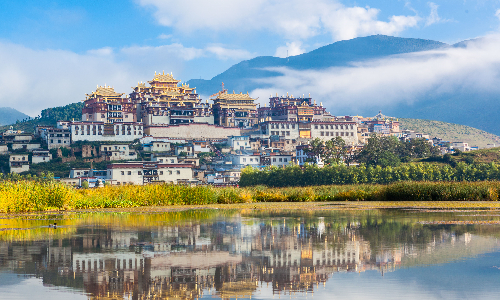
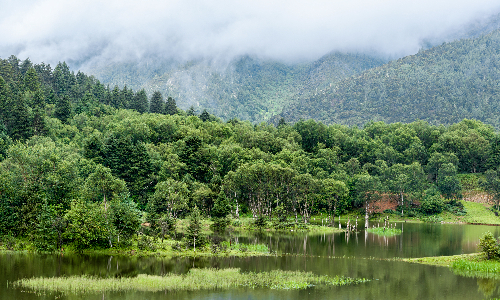
 Kunming
Kunming This morning, it’s time to say goodbye to beautiful Shangri-la. Let us leave for Kunming by the estimated flight 8L9832 09:55/10:55.
Upon arriving, the tour guide will take you to Stone Forest, known as the First Marvelous Spectacle of the World. It consists of seven scenic areas, covering 350 square kilometers. Featuring a karst landform, it is a masterpiece of nature with more than one hundred clusters of huge stones, which is like a black forest. Dating back to 280 million years, all kinds of eccentric towering stones are standing in different poses. You will be amazed by the artwork of nature.
After that, you will be taken to the hotel.
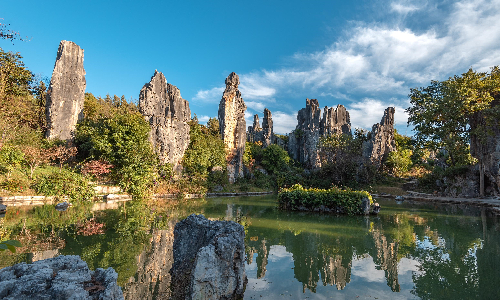
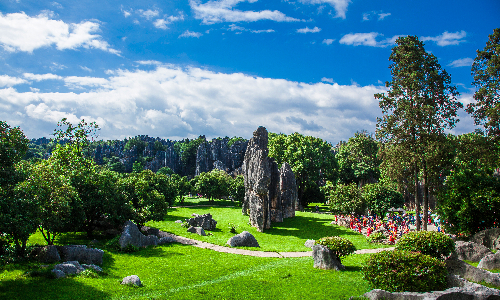
 Xi’an
Xi’an After breakfast, you are scheduled to get on the estimated flight MU2263 09:30/11:55 to Xi'an. When you arrive, the tour guide there will take you downtown to have lunch.
In the afternoon, you will take a walk to Muslim Quarter, a famous food culture street. In the late 1990s, some Muslims came here to do catering business. Later on, the street has grown up into a flourishing snacks street with snack bars as well as dress shops and artworks stores on both sides. You may take a taste of glutinous rice and date cake, which is very nutritious. This mouthwatering food is said to be developed from an exclusive delicacy of princes of the Zhou Dynasty (1046 BC-771BC). So it’s a good chance to enjoy the taste of the ancient Chinese aristocratic food.
The next spot is the Great Mosque, one of the four oldest mosques in China. With an area of 13,000 square meters, the great architectural complex is encompassed by a brick wall. Set up in 742, it is comprised of four courtyards. In the first courtyard stands a large memorial archway with a history of over 360 years and its roof is covered with glazed tile. It’s a spectacular structure.
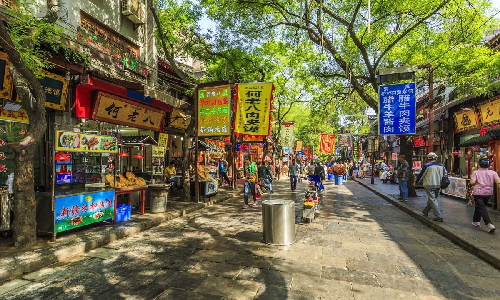
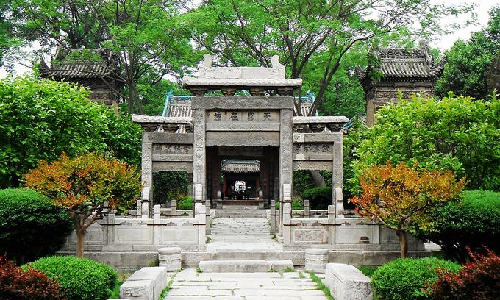
Today let us go to Terracotta Warriors and Horses Museum, around 41 kilometers away to the northeast of downtown Xi’an. After an about 50-minute drive, you will arrive at the “Eighth Wonder of the World”. The museum is built on the original site of three pits housing terracotta warriors and horses. They are funeral objects of the mausoleum of the First Qin Emperor (259 BC-210 BC, the first emperor that first realized the unification of ancient China). In the No. 1 pit, there are about 6,000 life-size terracotta warriors and horses, showing a spectacular army in ancient China. You will be surprised by the different and vivid expressions on each of them.
In the afternoon, you will visit Big Wild Goose Pagoda. Being 64 meters high, the 7-storey pagoda was built with bricks to house Buddha statues and Buddhist scriptures brought by monk Xuan Zang from India. It’s said that on the way of his journey to the west, monk Xuan Zang was lost in a desert. When he was desperate for water, he saw a big wild goose flying along with a small one. Then he saluted them, saying that if they could lead him out of the desert, he would build a pagoda for them. After hearing this, the two gooses nodded and led him out of the desert. When Xuan Zang came back from India, he delivered his promise and built the pagoda for the two gooses and named it Big Wild Goose Pagoda.
The next stop is City Wall, the best-preserved and largest ancient city wall in China. It's a 12-meter high wall forming an enclosed rectangular shape with a circumference of 13.74 kilometers. It has four main gates which played an important role in protecting Chang'an (now Xi'an). Among them, Yongning Gate, also called South Gate, is the most ancient gate, built in the Sui Dynasty (581-618) and it’s also the most beautiful gate after renovation. The width of the wall is 12 to 14 meters on top, so it’s wide enough to walk on it. If you like, you can even rent a bike to appreciate the ancient city on the wall.
After that, you will be taken back to the hotel.
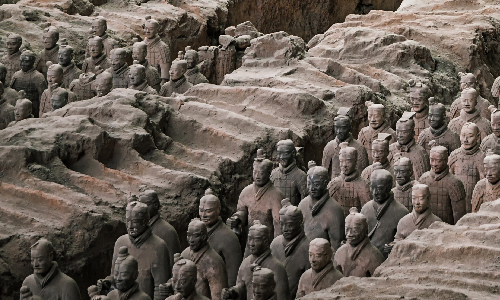
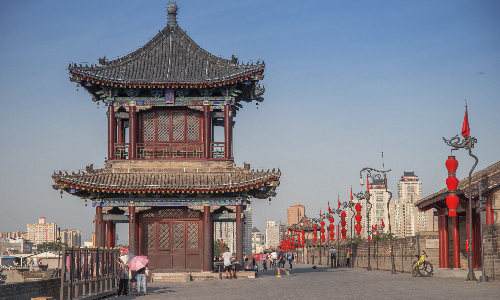
 Beijing
Beijing Today you will be taken to board the estimated flight CA1206 08:30/10:45 to Beijing. Upon arrival, the local tour guide will pick you up at the airport to have lunch downtown.
In the afternoon, let us begin the tour in Beijing with 798 Art Zone as the first stop. The zone was once the former site of several factories in the electronic industry. Covering over 600,000 square meters, 798 Art Zone is renowned for contemporary art and famous art studios. After artists and cultural institutions entered the zone, it has developed into a home to galleries, art centers, design studios, restaurants, and bars.
Then you will have an exploration of the Temple of Heaven. Erected in 1420, the Temple of Heaven was where emperors of the Ming and Qing dynasties worshipped heaven and prayed for good harvests. Covering 2.73 million square meters, it is divided into two parts – the outer altar and the inner altar. The main buildings are located in the inner altar, including the Hall of Prayer for Good Harvests, the Circular Mound Altar, and the Hall of Imperial Zenith. The structures of all the buildings are very elaborate and reflect the ancient Chinese concept of heaven and earth. Standing on the Circular Mound Altar brimming with a serene ambiance, you will feel so close to Heaven.
After getting inner peace there, you will be taken back to the hotel.
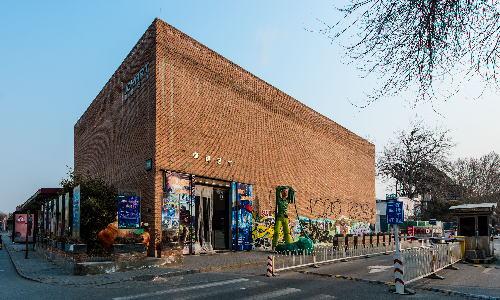
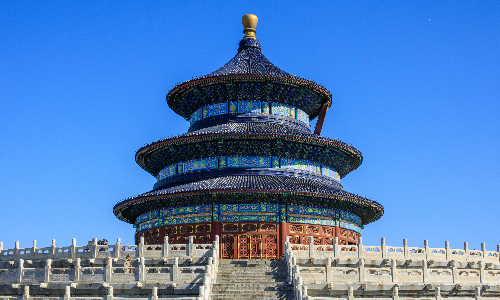
Today’s first destination is Tian’anmen Square. With an area of 440,000 square meters, the square has a capacity of one million people participating in grand rallies. In its center stands Monument to the People's Heroes and Tian'anmen Rostrum is located in its north end. It is in this place that the last Chinese emperor announced abdication in 1912 and Chairman Mao Zedong announced the establishment of the People's Republic of China in 1949. As the center of political activity in China, it witnessed the great transformation of China from the demise of feudalism to the rise of democracy.
Next, you will visit Forbidden City (closed on Monday) behind Tian'anmen Square. The Forbidden City was built in 1420 and is the best-preserved and largest surviving imperial palace in the world. Covering 720,000 square meters, it consists of two parts. The first one is the outer palace as an administrative area and the second one is the inner palace as the imperial residence. There are a large number of architectural masterpieces. Hall of Supreme Harmony is the existing highest ancient building in China, deemed as the symbol of imperial power. It is where the Ming and Qing emperors held grand ceremonies like their enthronements and weddings.
Next, you will go hiking on the Great Wall which is the last stop of your tour. In the afternoon, you will be taken to Juyongguan Great Wall, 60 kilometers northwest away from Forbidden City. It takes one hour to get there. Built in a 15-kilometer long valley, the wall is a crucial pass of the Great Wall. It played an important role in defending Beijing City in ancient times. On both sides are high mountains covered with layers of trees and flowers. The enchanting scenes on the wall touched Emperor Qianlong and he inscribed four characters and had them carved in a stone tablet as praise for the wall.
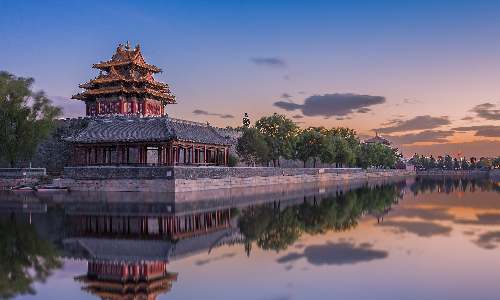
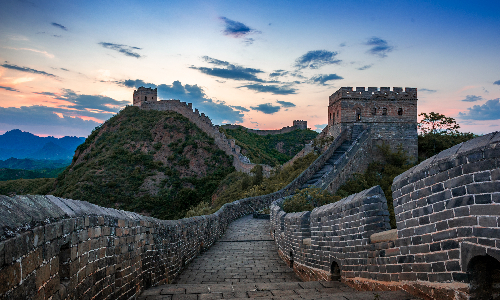
After breakfast, you will be sent to the airport. Hopefully, you have had a wonderful trip.
Author: Wu Hongmei
Proofreader: Lexie
| City | Five Star hotel list | Four Star hotel list |
|---|---|---|
| Shanghai | Ocean Hotel Shanghai | Courtyard by Marriott Shanghai Central |
| Kunming | Grand Park Kunming | UChoice Hotel |
| Lijiang | Wonderport International Hotel | Lijiang Wangfu Hotel |
| Shangri-La | Paradise Hotel | Ri Yue Xing Cheng Hotel |
| Xi'an | Tianyu Gloria Grand Hotel Xi'an | Sunworld Dynasty Hotel |
| Beijing | Sunworld Dynasty Hotel Beijing Wangfujing | Sunworld Hotel Wangfujing |
 |
![]() About your child or infant, please contact us for a discounted price.
About your child or infant, please contact us for a discounted price.



We started with a few days in Beijing & ended in Shanghai, from where we visited the Forbidden City and Great Wall. In between we visited Terra Cotta Warriors Museum, Panda Base, Shanghai Disneyland.

We had a wonderful holiday in China which will remain long in the memory. China is a breathtakingly beautiful country full of splendid temples and palaces, mountains and rivers, peaceful rural scenes and bustling shopping streets.
 QUICK ENQUIRY
QUICK ENQUIRY